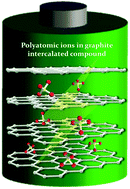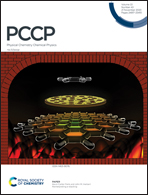Challenges and prospects of polyatomic ions’ intercalation in the graphite layer for energy storage applications
Abstract
Global population explosion has led to the rapid revolution of science and technology, and the high energy demand has necessitated new and efficient energy conversion and storage systems. Lithium ion batteries (LIBs) have a high potential window, high capacity, and high stability, but suffer from high cost and low safety. Therefore, many alternative batteries, including sodium ion batteries (NIBs), potassium (KIBs), aluminum (AIBs), and dual ion batteries (DIBs), have been introduced. One of the key working principles of these batteries is based on cation or anion intercalation in the graphite layers, and leads to the formation of graphite intercalation compounds (GICs). Recently, studies based on determining a reaction mechanism to improve the performance of the batteries have been conducted. In this review, an overview of the work on the reaction mechanism of polyatomic ions intercalated into GICs, the structure of intercalated polyatomic ions, the structure of the accommodated GICs, and their staging is provided. In other words, this review focuses on unraveling and understanding the reaction mechanisms for the intercalation of polyatomic ions into GICs by in situ and ex situ techniques, correlated with computational studies. The current limitations and future prospects of polyatomic ions intercalation batteries are also discussed.

- This article is part of the themed collection: PCCP Perspectives


 Please wait while we load your content...
Please wait while we load your content...